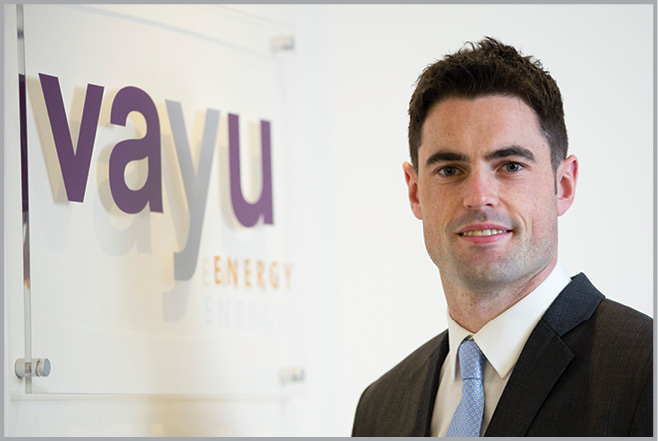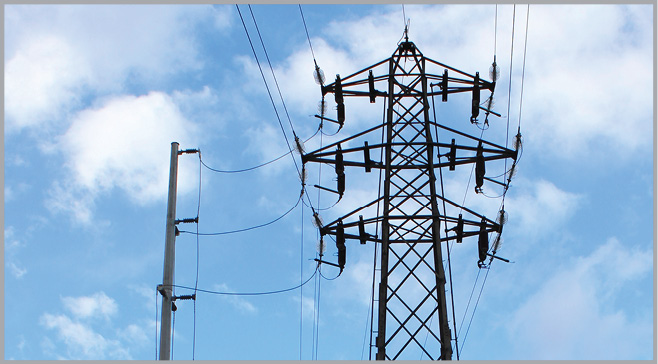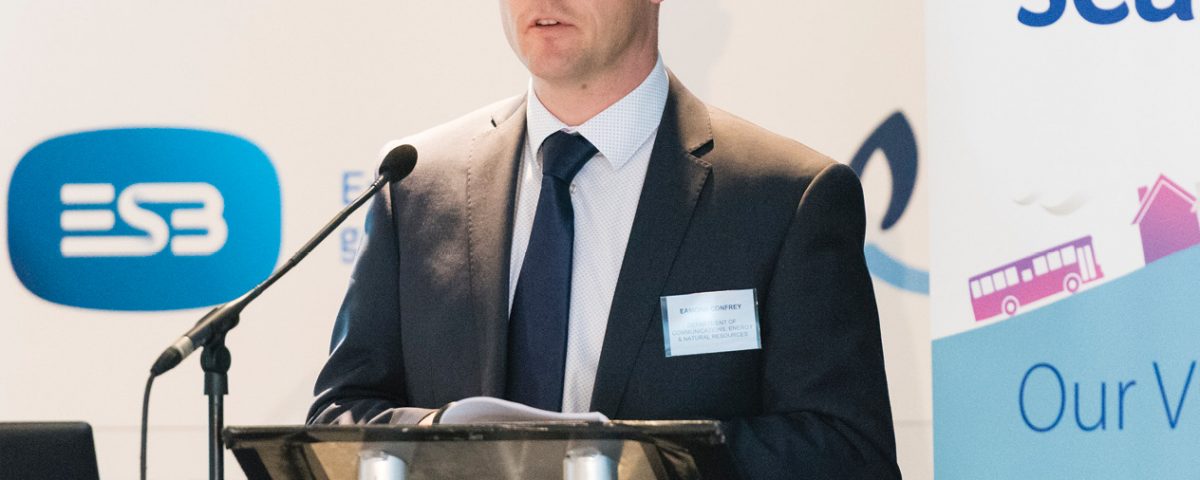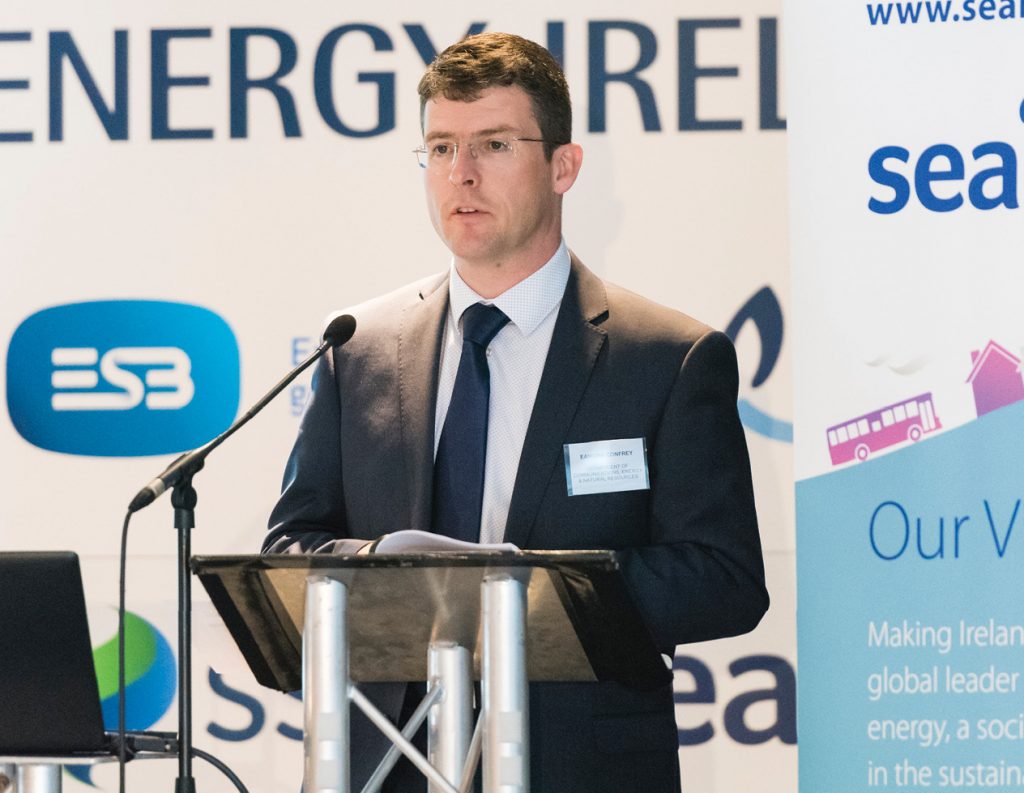
Large energy users’ drive for green
8th November 2016
Innovations in the power sector: POC-MAST, Protean and UAV LiDAR
8th November 2016The significance of Ireland’s Renewable Heat Incentive


Analysis has confirmed that the introduction of a Renewable Heat Incentive (RHI) could prevent the creation of emissions, equivalent to 448kt of CO2 annually in the non-ETS sector, according to Eamonn Confrey, from the Decarbonisation Division of the Department of Communications, Climate Action and Environment.
The timetable, leading to the introduction of the RHI, was the theme of Eamonn Confrey’s presentation delivered to the Energy Ireland 2016 conference.
“The demand for heat energy is the largest source of energy use in Ireland, accounting for 45 per cent of all primary energy usage and 33 per cent of CO2 emissions. Ireland’s EU target for 2020 is to reduce greenhouse gas emissions by 20 per cent on 2005 levels,” said Confrey.
“This means reducing emissions by approximately 9.3Mt of CO2, on 2005 levels, down to an overall non-ETS total of 37.5Mt of CO2.
“However, currently our non-ETS sector emissions are targeted to be between 6 and 11 per cent below 2005 levels by 2020.”
Confrey confirmed that while Ireland’s energy import dependency decreased to 85 per cent in 2014, from 89 per cent in 2013, the cost of all energy imports was still around €5.7 billion. This works out at approximately 3.2 per cent of Ireland’s GDP. While this total energy import figure is down from €6.5 billion in 2013, due mainly to falling oil and gas import prices, there is no certainty that prices will remain low or stable.
“So it remains an imperative, from both an economic and an environmental perspective, that we reduce our reliance on these imports.”
Confrey also confirmed that heating is the least regulated energy sector in Ireland.
“It is also the least homogeneous, in terms of its structure. This is a cause of major concern,” he said.
According to Confrey, Ireland has a target to deliver 12 per cent of final heat demand from renewable energy sources by 2020. However, the latest figures indicate that given current levels of progress the country will fall considerably short when it comes to meeting this target.
“This is why a properly targeted RHI can play such an important role moving forward,” he added.
“It is part of a larger bioenergy plan that will underpin the development of the heating sector and lay the foundations for its future growth and development.
“The plan seeks to form a link between the critical policy areas of renewable energy, agriculture, forestry, the environment, sustainability and the growth potential of the green economy.
“It will also take account of relevant international policy developments.”
Confrey reflected on the significance of the December 2015 Energy White Paper. He said that it sets out a vision for a radical transformation of Ireland’s energy system which is required to meet the country’s climate policy objectives. This transformation will, it is believed, result in a low-carbon energy system by 2050. This means that greenhouse gas emissions from the energy system will be reduced by between 80 per cent and 95 per cent, compared to 1990 levels.
The White Paper maintains the three core pillars of Ireland’s energy policy, namely: sustainability; security of supply; and competitiveness. According to Confrey, it sets a course for an energy sector where the State will provide the supports which enable consumers to become active energy citizens. In essence, Ireland’s energy system is going to change from one that is almost exclusively led by Government and utilities. It will instead become one where individuals and communities are agents of change in the way the country generates, transmits, stores, conserves and uses energy.
He further explained that the White Paper sets out how the energy transition will produce accelerated and diversified renewable energy generation, and a renewed impetus on energy efficiency. This will be facilitated by strong regulation, effective markets, appropriate infrastructure, and deeper cooperation with partners in Northern Ireland and the EU.
Confrey commented that the RHI support would be based on the principle of providing an incentive payment rewarding users for each unit of renewable heat produced and used, based on a unit rate of tariff applied to metered renewable heat output. The tariff would be calculated to compensate for the additional capital cost and perceived barriers for the renewable technology relative to fossil fuel heating.
“a properly targeted RHI can play such an important role moving forward”
“The first RHI consultation closed in September 2015,” said Confrey.
“This elicited a wide range of views from all relevant stakeholders. From a financing point of view, a number of submissions stress the need for the support payments to be weighted towards the first five years.
“In addition project financing should be available or provision made for a one-off upfront payment covering capital costs.
“Enhancing air quality was a recurring theme of the environmental sustainability role envisaged for RHI. From an eligibility perspective, the need to have renewable heat sources metered was also identified. This means that heat is not being generated at times when there is no demand for it.”
Confrey confirmed that there will be a second RHI consultation period in the autumn of 2016.
“Prior to this a strategic environment assessment of the proposed RHI will be published by SEAI,” he said.
“The objectives of this process are to provide for a high level of protection of the environment and to promote sustainable development by contributing to the integration of environmental considerations into the preparation and adoption of the finalised RHI.
“It is envisaged that the scheme, initially, will be of direct relevance to industrial scale heat producing operations. However, a subsequent trickledown effect will see it impact on the domestic heating sector in due course.
“A final decision will be taken by government on the merits of RHI after this process has been completed with the scheme, hopefully, going live at some stage in 2017. The implementation of the fully developed scheme will also require agreement being secured at EU level.
“This is because of the state said protocols that must be followed.”
Confrey stressed the need for the RHI to work at a fundamentally economic level.
“The investment required to make it a reality is crucially important. And a significant proportion of the money must come from the private sector. If investors are dubious about the RHI’s economic viability, then the project will not get off the ground.”
He also indicated that energy from biomass has a critical role to play in meeting Ireland’s ambitions for 2020 and beyond. It is expected that sustainable bioenergy will account for up to half of Ireland’s 16 per cent renewable energy target.
“Bioenergy is also helping position us to meet the emerging and longer term challenges expressed in international emissions and renewables targets for 2030 and 2050.
“A vibrant bioenergy sector can contribute to the fundamental of European energy policy. A successful sector can also generate jobs and contribute to rural development. The SEAI estimates that it could be worth up to €200 million to our local economy on an annual basis.”
Confrey referenced three other actions, where renewable energy is concerned, that will impact on the heat sector. These are the establishment of a regulatory framework to facilitate the development of geothermal energy sources; the completion of an economic assessment of the potential for biogas; and supporting the deployment of sustainable biofuels through increases to the Biofuels’ Obligation Scheme.
“The decision has already been taken to increase the biofuels’ obligation in transport from the current figure of 6 per cent up to 8 per cent from 2017 onwards,” he added.
